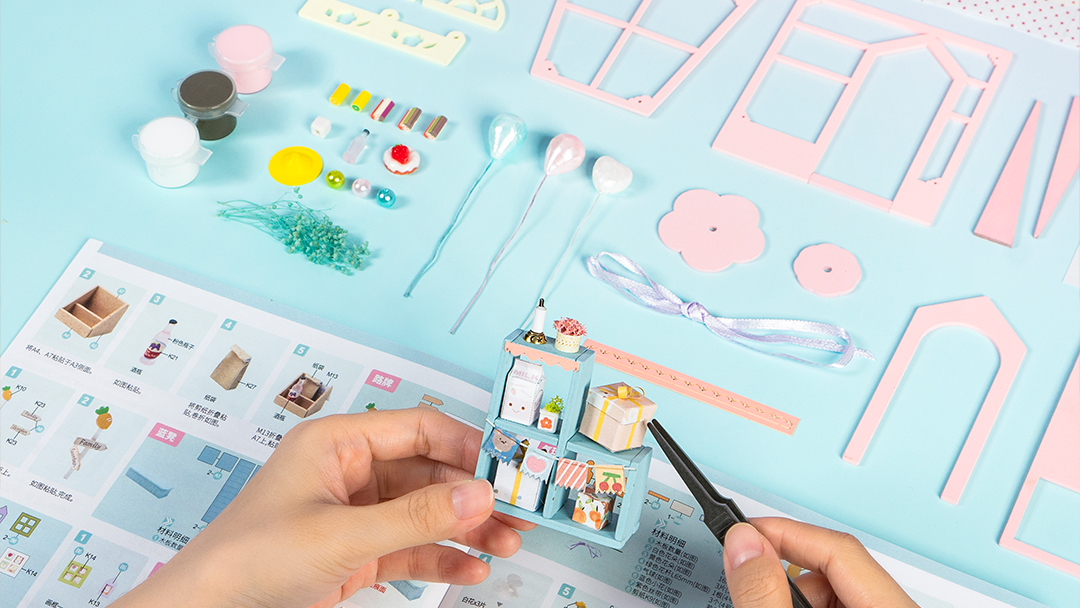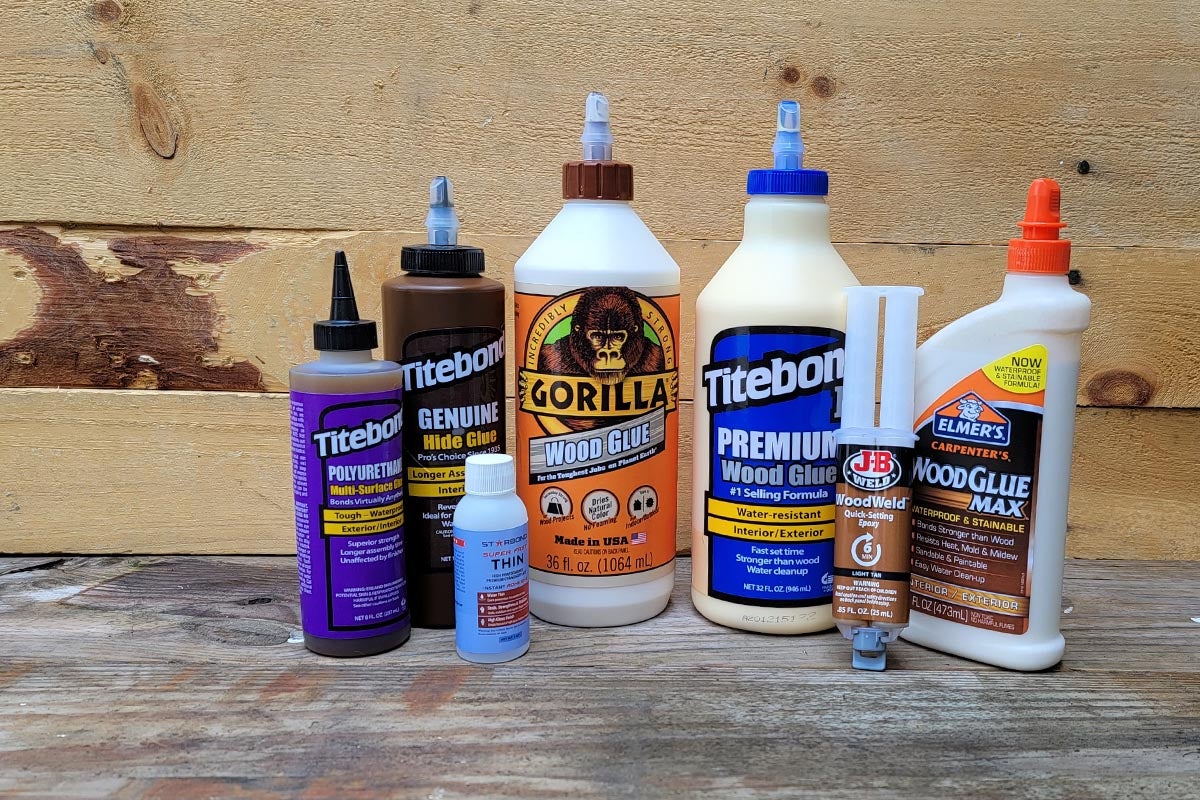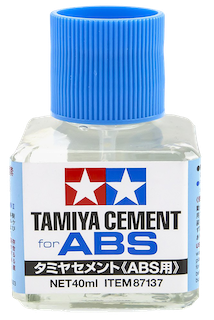How to Choose the Best Glue for Your Miniature House
Due to international shipping, all products sold on Robotimeonline.com do not include glue. While we have made every effort to design our DIY kits without the need for glue, certain products like some of miniature houses may still require glue during the assembly process. You can read this article to learn about the glue that is most suitable for your DIY miniature house in terms of materials and different circumstances.

Choosing the best glue for miniature houses can be a daunting job given that there’s so much variety to choose from. The most important thing you need to remember is that different jobs require different glues. This means that there’s no single best glue for miniatures. Instead, it all comes down to the material you’re trying to stick together and whether you’re trying to get a temporary fix or a permanent hold.
So, without further ado, let’s find out the pros and cons of each type of glue along with some tips on how to use them.
The Best Glue for Miniature Houses
White Latex Glue(Polyvinyl acetate)

White Latex Glue is suitable for all Rolife miniature house kits. Its primary material is rubber, which forms a strong adhesive after drying. White glue is commonly used for bonding wood, paper, leather, and other materials.
Pros
- Non-toxic, with strong adhesion and flexibility
- Suitable for wood, paper, leather, and other materials
- Moderate stickiness and easy to remove
Cons
- Not ideal for bonding harder materials.
Wood Glue

Wood glue should be your go-to when assembling the wooden main structure of your miniature house, especially if you’re using ⅜” or thicker wood. If you’re crafting on a budget, you can use tacky glue as a substitute but only for the thinner plywood diecuts of your miniature.
There are, however, a couple of things to watch out for when using wood glue. First, it dries yellow. You have to be careful when applying it unless you’re planning to cover it up later. Second, you have to watch out for drips because they’re next to impossible to remove once dried. The best way to do this is by sanding but it could damage the finished wood.
Pros
- Strongly and permanently holds together wooden parts
- Best glue for your dollhouse’s main structure
Cons
- Dries yellow
- Drips that have dried are extremely hard to remove
Tacky Glue
Tacky glue is the jack of all trades of glues. It can bond plastic, wood, fabric, paper, glass, and painted surfaces quite well. Plus, unlike superglue, it doesn’t get brittle over time. So, no breaking apart if it accidentally gets knocked off the shelf. It also dries clear quite quickly, making it a great choice if you’re planning to paint the surface over or want to maintain the wood’s natural look.
Overall, tacky glue is one of the best glue for miniature house kits because of its versatility and cheap price.
Pros:
- Dries clear fast
- Doesn’t dry out over time
- Versatile and cheap
- Bonds most materials pretty well
Cons:
- Not suitable for thick wooden pieces
Super Glue

Cyanoacrylate, better known as super glue or instant glue, is a solvent-based adhesive that only requires a teeny weeny amount to make a strong bond. It’s the best glue for small applications where you need a quick dry. No need for clamps or tape to keep the pieces in places.
We’re talking 15 to 45 seconds dry time, super indeed! Of course, this ultra fast dry time is a double-edged sword, since this can spell disaster if you make a mistake.
If you’re planning to use it on glass, it’s a good idea to test it first because, depending on the brand, it can set clear or a little cloudy. Also, as mentioned before, super glue gets brittle over time, making the bond weaker.
Pros:
- Almost instantaneous dry time
- Extremely strong hold
- Great for small applications
- Works for most materials except some types of plastic
Cons:
- Bond goes weak over time
- Not a lot of room for mistakes
Paste
Paste is a classic favorite among miniature builders. This water-based adhesive is odor-free and non-toxic. It’s the best glue for miniatures, particularly for the wallpaper, carpet, ceiling paper, and flooring. It’s transparent once dry and doesn’t curl nor discolor wallpaper.
Thick and spreadable, you can adjust its consistency by adding a few drops of hot water at a time. Paste is also slow-setting and repositionable. You can even wash it off with some soap and water if you get it on your hands. Overall, it’s one of our favorite adhesives because it gives you a lot of room for errors.
Pros:
- Cleans off with water
- Doesn’t wrinkle nor discolor wallpaper
- Transparent once dry
- Generous drying time
Cons:
- Can be messy to use
Plastic Glue(Solvent cement)

Plastic glue is the key if you’re trying to glue together a type of plastic that even the mighty super glue can’t handle. Also known as plastic cement, it comes with a precision tip and will hold your plastic pieces together for eternity. It isn’t as fast-drying as super glue, however, and will remain flexible enough for up to a minute in case it needs repositioning.
Pros:
- Best glue for miniatures with mostly plastic pieces
- Dries relatively fast with some room for adjustments
- Comes with a precision tip
Cons:
- Extremely strong smell
Mortar Mix
For porous surfaces like brick, stone, plaster, and stucco, a dollhouse mortar mix is your best bet. It comes in powder form so you need to add some water until you get the right consistency. Once applied, it should set solid in half an hour.
That said, it can take some trial and error to get the right consistency so it’s best to add small amounts of water in increments. Also, as per the warning, you should also wear a mask while it’s still in powder form to avoid inhaling the dust.
Pros:
- Does a good job adhering porous surfaces together
- Dries in less than an hour
Cons:
- Should be handled with care
Gap Fillers
Just as its name suggests, gap fillers are used to fill glue gaps for an invisible seam. It’s not just for aesthetics, however, since it also improves the overall toughness of the bond of the pieces being held together.
You can choose between a powder filler or a plastic putty to do the job. For the powder filler, you just pour it in the gap using the precision tip before adding a few drops of thin superglue. As for the plastic putty, just simply add it to the gap you want to bridge and smooth it out with a spatula.
Between the two, plastic putty is easier to use and even washes off with water. That said, powder filler offers a stronger bond and dries faster.
Pros:
- Great for making invisible seams
- Strengthens the bond between pieces
- Both types of gap fillers dry quite quickly
Cons:
- Plastic putty isn’t water-resistant
Museum Gel
Once you’re finished with your miniature house, you can protect it from falls by using museum gel to secure it on the shelf or display table. You just get a small amount which you form into a ball before sticking it on the bottom of your masterpiece. Position it where you want it displayed, press it lightly, and give it a small twist to secure. It should dry up in 30 minutes.
If you’re worried about your miniature being stuck in that place forever, the good news is that it’s still removable. A little twist and you can pull it off. Even better, museum gel can be removed from painted, varnished, and inked surfaces without leaving any damage or residue.
Pros:
- Removable but sticky enough to prevent your miniature from falling to its doom
- Won’t ruin or stain your dollhouse or the surface it’s been sitting on
Cons:
- Not for porous or untreated surfaces
Double-Sided Adhesive Gels and Putty
If you like changing things up for your miniature house every now and then, you can use double-sided adhesive gels for a temporary fix. It also works great if you want to try which furniture and decors would look great first before sticking them permanently.
This is much better than double-sided tape which can ruin the painted surface once removed. Adhesive gels work on most types of materials without damaging the surface.
Pros:
- Best glue for miniatures where a temporary fix is needed
- Works on most smooth surfaces without ruining it upon removal
Cons:
- Will ruin paper and painted walls if left for long
Masking Tape
This adhesive is a great choice for testing your builds before gluing them permanently. It also works great for holding pieces together while waiting for the glue to dry. It can be removed easily from wood and painted surfaces without damage.
Pros:
- Great for clamping pieces together while the glue is still drying
- A temporary adhesive that won’t leave marks or ruin wood and painted surfaces
Cons:
- Might tear off paper
Some Miniature House Glue Tips
Nowhere in this list will you find hot glue gun. It’s just a big no for miniature house assembly. Not only is it a weak adhesive, it leaves gaps too.
Keep a clean rag or some paper towels on hand to easily clean up excess glue and drips before they dry up.
Before gluing them permanently, dry fit the pieces first to see whether they need some sanding down.
If you often have wallpapering issues, too much adhesive is probably the culprit. Use a stiff plastic card or brush to thinly and evenly apply glue on the surface before positioning the pre-cut wallpaper. Next, start smoothing it out from the center using a clean rag. Use steady pressure for a good bond. Note that too much pressure might rip the wallpaper. Remove excess glue with a slightly damp cloth.
There you have it - the best glue for miniature houses depending on material and situation. These winners will make your life much easier when it comes to miniature assembly and will hold your pieces together for as long or short as you want them to.










